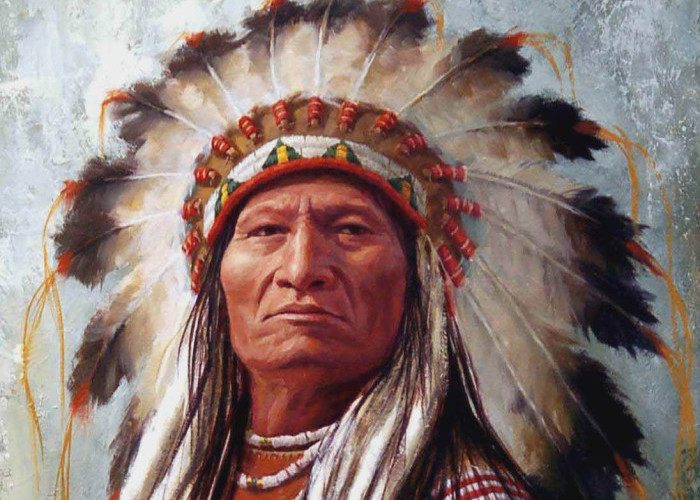 Pharrell Williams drew some heat (back in June 4 2014) for wearing a Native American headdress on the cover of Elle UK, leading the singer to apologize for what many considered cultural appropriation of a sacred tradition — despite the fact that he is part Native American.
Pharrell Williams drew some heat (back in June 4 2014) for wearing a Native American headdress on the cover of Elle UK, leading the singer to apologize for what many considered cultural appropriation of a sacred tradition — despite the fact that he is part Native American.
“I respect and honor every kind of race, background and culture,” he said via a rep. “I am genuinely sorry.”
Still, Skateboard P is far from the first celeb to cross cultural lines and ruffle feathers (no pun intended). Gwen Stefani, musician Christina Fallin and a cadre of Victoria’s Secret models have all donned headdresses, as have numerous festival-goers the world over. Hit up any music fest — from Electric Daisy to Pitchfork — and you’re sure to see some sunburned dude in a full war bonnet.
Yup, the trend does not seem to be dissipating — despite outrage — the issue perhaps being that these gleeful feather-wearers are simply uninformed.
In light of Pharrell’s recent apology, and in prep for the long summer festival experience before us, MTV News hit up a series of experts and people in the Native American community to ask them all the questions you’ve ever wanted to pose about headdresses:
1). What Does Wearing A Headdress Mean?

“The headdress is reserved for our revered elders who, through their selflessness and leadership, have earned the right to wear one. It’s a spiritual garb, not just cultural; it’s not merely an addition to one’s attire. Wearing one, even an imitation headdress, belittles what our elders have spent a lifetime to earn.” —
Simon Moya-Smith, citizen of the Oglala Lakota Nation and journalist
“Both feathers and face paint have purpose and often spiritual significance depending on tribal protocol and individual interpretation. In Native cultures, both feathers and face paint are earned through actions and deeds that bring honor to both tribes and nations. Individuals [outside the community] who wear feathers or face paint were not given the rights or permissions to wear them. This is analogous to casually wearing a purple heart or medal of honor that was not earned.” — Dennis Zotigh, Cultural Specialist, National Museum of the American Indian
“[Wearing a headdress] could be similar to if the [shtreimel] became hip. Or the headdress that the pope wears — if [kids] started wearing that, if that became a trend. I am sure any Catholic people might be disrespected. So for our people, it is the same way.” — Cliff Matias, Director of Redhawk Native American Arts Council
2). Why Can’t I Wear A Headdress?

“As wearing a headdress reinforces stereotypes about Native people and appropriates our culture with little or no regard for our traditions, I think it is egregious and contributes to the dehumanization of our people.” — Jacqueline Keeler, founder of EONM (Eradicating Offensive Native Mascotry)
“When kids wear these things, they have no idea what they are putting on. I see kids throwing them on the floor and disrespecting these objects that are honored and respected for generations — and the people [who] are giving their lives to wear those things. — Cliff Matias, Director of Redhawk Native American Arts Council
3). Can I Wear A Headdress If I’m Part-Native American, Like Pharrell?
“First of all, if he is part-Native American — which he very well may be — well maybe then he should know better than to put a war bonnet on. Just because you are part-Native American doesn’t mean you can put a war bonnet on. What do you do for Native Americans? What parts of the culture are you involved in? If the best you could do is say, ’I am Native American and I can put a war bonnet on,’ that is pretty sad.” — Cliff Matias, Director of Redhawk Native American Arts Council
4). How Can I Appreciate Native American Culture Without Being Offensive?

“There needs to be balance between the promotion of stereotypes and actual real knowledge and respect for how Native people use these cultural treasures. The notion of Native people as primarily in the past and open to acquisition by anyone is not compatible with understanding and respecting Native people as modern citizens of Sovereign Nations who STILL control a great deal of land and energy resources in the United States.
Want To Know More About Cultural Appropriation? Hit Up Look Different For The Lowdown
“Most folks appropriating our culture have no clue as to who we really are (actual sovereign nations within the borders of the United States with an international status higher than states), and thus permit and allow the continued theft of our land, resources and culture. It is a completely immoral stance that allows for the continued elimination of Native people. It is a legacy of an evil and shameful history that the United States has long sought to hide and ignore. The ignorance of Americans regarding this is reflected in their misuse of our culture.” — Jacqueline Keeler, founder of EONM (Eradicating Offensive Native Mascotry)
“By practicing politeness and civil etiquette. If in doubt, ask the artist or tribe for permission to wear their tribal designs, jewelry and cultural items. You can contact tribes and Native artists on the Internet.” — Dennis Zotigh, Cultural Specialist, National Museum of the American Indian
Cultural Appropriation






























